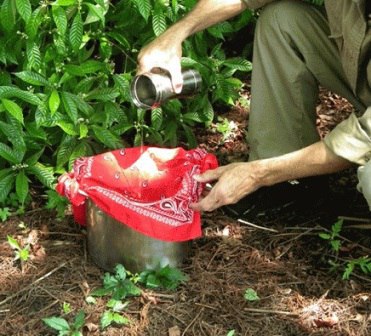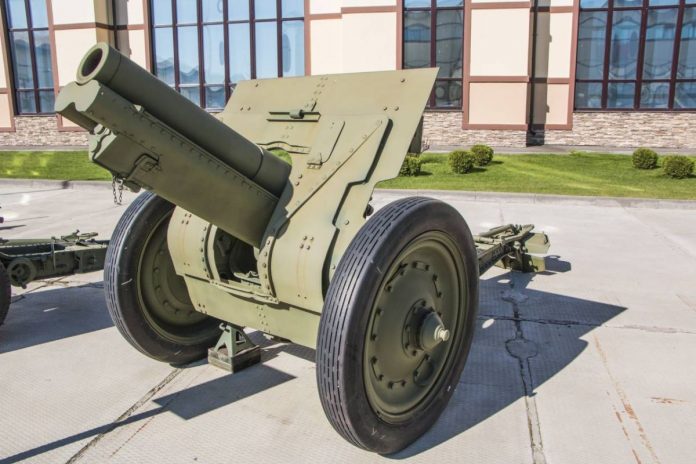
The most difficult thing to talk about guns, It has long been at the hearing. In the prewar period for this indicator the first place we must pay, without hesitation, 122-mm howitzer sample divisional 1910/30 years.
Probably, there is no armed conflict at the time, which we would not have lit up the howitzer. And on the frames chronicle of the Great Patriotic these tools - constant battles heroes. Moreover, they can be seen on both sides of the front. Command «Fire» sounds in Russian, German, Finnish, Romanian. Opponents did not disdain to use trophies. agree, this is quite an important indicator of reliability, quality and good performance combat weapons.
First of all it is necessary to clarify the historical necessity of occurrence of this particular weapon. We have already talked about the problems of the Red Army at the time. As well as the problems of the entire USSR. depreciation of tools, lack of capacity of production of high-quality spare parts, moral and technical obsolescence of weapons.
Add to this the lack of engineering and design staff in the industry, obsolescence of production technologies, lack many of the things, that has already been used in the defense industry of western countries.
And all this against the background of the country openly hostile environment. Against the background of the West outright preparation for war with the Soviet Union.
Naturally, in the Red Army and the Soviet leadership were aware, that without urgent action by the Red Army re-country in a fairly near future it will be not only an outsider world powers artillery, but will be forced to spend huge amounts of money for the purchase of obviously outdated Western artillery systems. Modern artillery was needed here and now.
On RKKA service in the 20s was just two 48-linear (1 line = 0,1 inch = 2,54 mm) field howitzers: sample 1909 and 1910 years. Development "Krupp" firms (Germany) and "Schneider" (France). In the mid-20s, after the final transition to the metric system and these tools have become 122 mm howitzers.
Comparison of these howitzers is beyond the scope of this article the authors. Therefore, the answer to the question of, why howitzer sample was chosen for modernization 1910 of the year, We shall sound with only one comment. This howitzer was more promising and had great potential for further modernization of the long range.
With equal, and sometimes the best (eg, by weight of heavy high-explosive grenades - 23 kg against 15-17 from Western models) Howitzer decent performance lost in the firing range of the Western model (German system 10,5 cm Feldhaubitze 98/09 or the British Royal Ordnance Quick Firing 4.5 inch howitzer): 7,7 km against 9,7 km.
In the mid-20s as soon as possible an understanding of the Soviet howitzer artillery backlog transformed into a direct order to develop the work in this direction. AT 1928 by CB Perm gun factory (Motovilihinskogo) It was given the task to modernize the howitzer and increase its long range to the level of the best examples. In this case, a weight advantage of grenades you want to save.
The head of the design team became Vladimir Sidorenko.
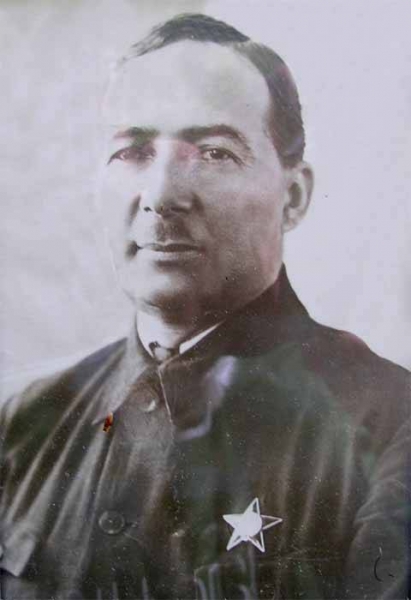
The same sample differs howitzer 1930 Year of gaubitsы 1910 of the year?
First of all, the new howitzer different chamber, which was extended by a threaded bore of the barrel for one gauge. This is to ensure, to ensure the safety of the new fire grenades. The necessary initial velocity heavy grenade could only be obtained by increasing the charge. this, in its turn, increased length of ammunition on 0,64 caliber.
A more simple physics. The standard sleeve or there was no room for all beams, or did not have sufficient scope for expansion resulting from the combustion of gunpowder gases, used if increased charge. In the latter case, an attempt to shot guns led to a break, because of the lack of volume for expansion of the gases in the breech their greatly increased pressure and temperature, and this led to a dramatic increase in propellant combustion rate of chemical reaction.
The next change in the structure caused by a decent gain recoil new grenade. Reinforced recoil device, the lifting mechanism and the carriage itself. The old mechanisms are not kept firing long-range ammunition.
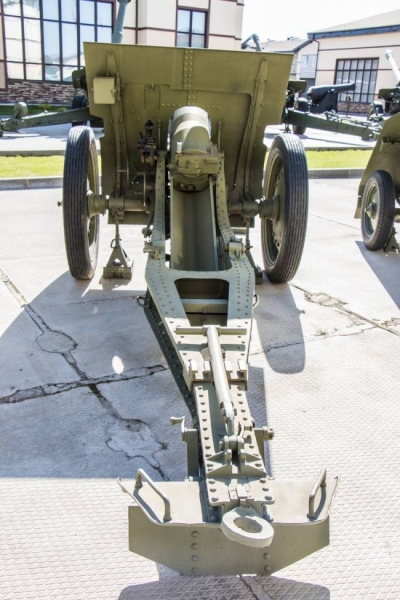
Hence, there was also the following modernization. Increasing the range required the creation of new sights. Here designers to reinvent the wheel did not. On the upgraded howitzer installed so-called normalized sight.
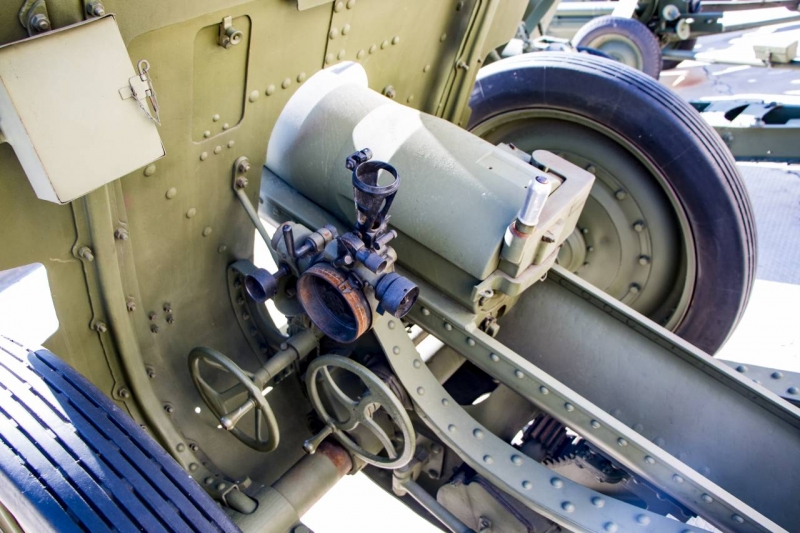
Similar sights were set at the time on all the upgraded gun. The difference lies only in cutting distance scale and fixtures. In the modern version would be a sight called single or unified.
As a result of these improvements the total mass of a few guns in firing position increased - 1466 kg.
modernized howitzer, which are now in museums around the world, can be identified by labeling. On trunks obligatory embossed lettering: «The elongated chamber». On Carriages - «consolidation» and «Countdown. 1910/30 city» of veretene, regulating ring and the rear cover rollback.
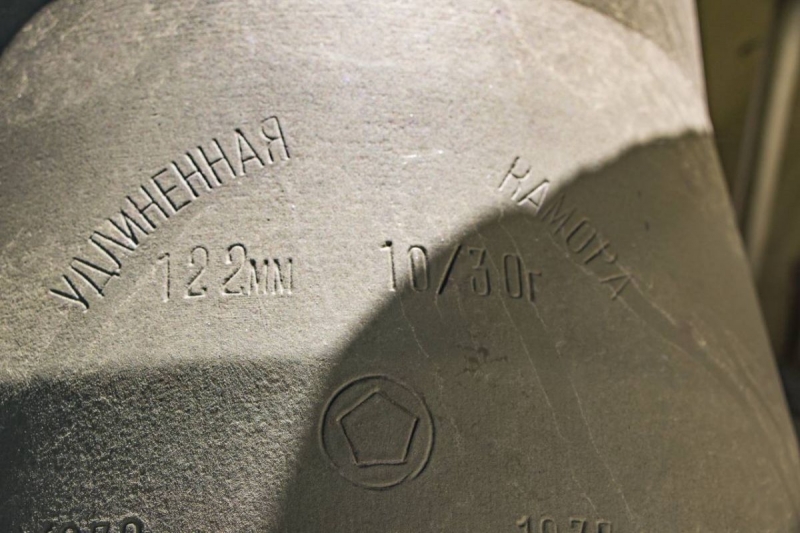
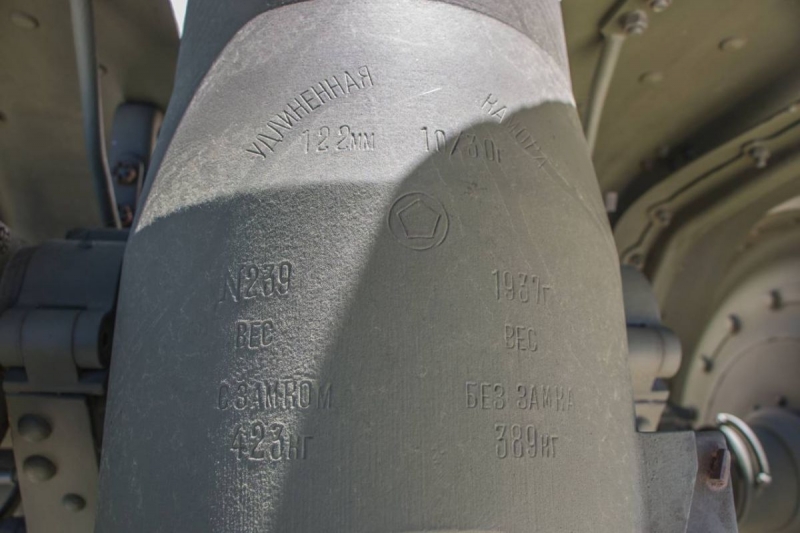
In this form the howitzer and was adopted in 1930 , the armament of the Red Army. It was produced in the same factory in Perm.
Constructively 122 mm howitzer formation. 1910/30 gg. (the main series of drawings "Litter B") It consisted of:
- of the pipe barrel, bonded jacket and muzzle or monobloc barrel without muzzle;
- a piston valve, Opening right. Closing and opening of the shutter produced by turning the handle in one step;
- odnobrusnogo mast, which included cradle, recoil device, collected in a sled, machine, guidance mechanisms, chassis, sights and a shield cover.
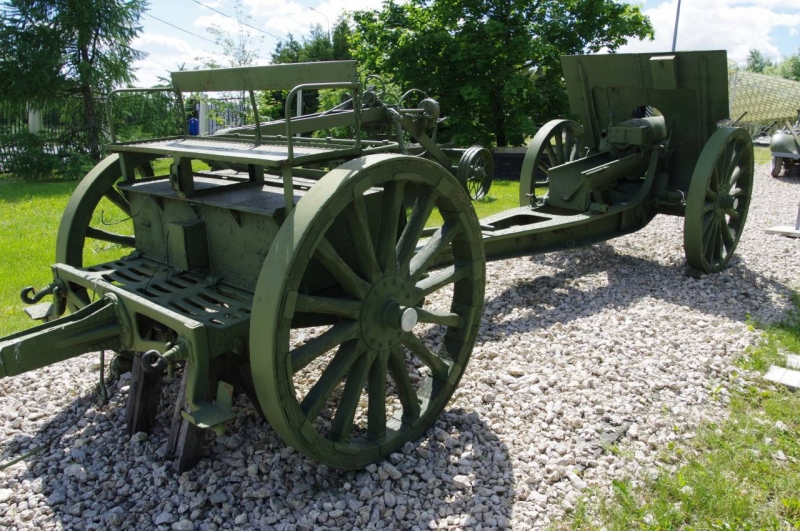
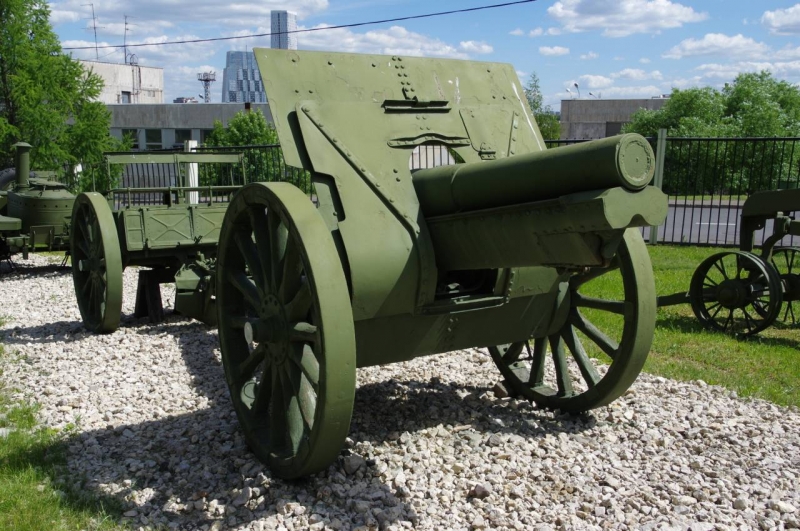
Towing guns carried Horse (six horses) Mechanical or traction. Always use the front and a charging box. transport speed of all 6 km / h on wooden wheels. Springs and metal wheels appeared after adopting, respectively, towing speed increased.
There is another merit of the upgraded 122-mm howitzer. She became «mother» Soviet self-propelled howitzer SU-5-2. The car was created as part of the construction of laminated divisional artillery. Based on the chassis of the T-26, the SU-5 were created.
SU-5-1 - self-propelled unit with a 76 mm gun.
SU-5-2 - self-propelled gun with a 122-mm howitzer.
SU-5-3 - self-propelled unit with 152-mm mortar.
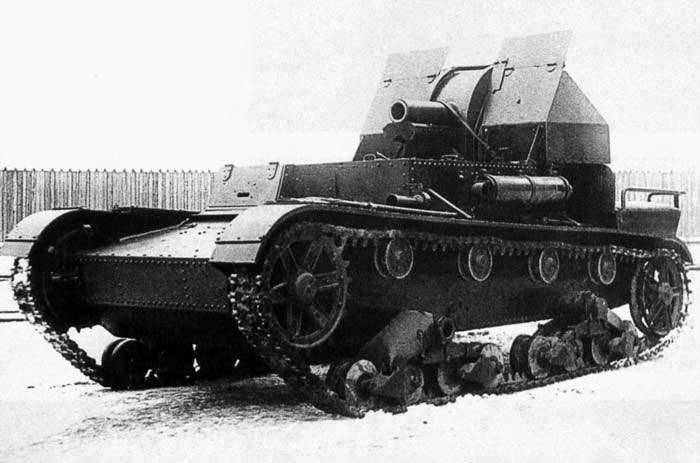 Samohodnaya howitzer SU 5-2
Samohodnaya howitzer SU 5-2
The car was created at the plant experienced engineering Name From. M. Kirov (plant №185). Passed factory and state tests. It has been recommended for adopting. Was built 30 SPG. However, they have been used to solve a completely non-core tasks.
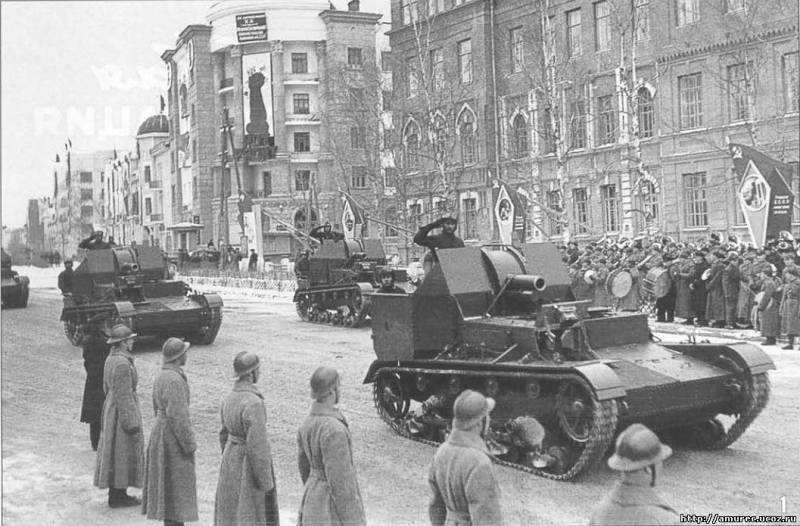
Light tanks intended for offensive action. so, howitzer tank units not necessary, and assault guns. SU-5-2 was used as a weapon of artillery support. And in this case, no need rapid movements. Ammunition Howitzers were preferable.
Nevertheless, these machines, even with such a small number of, fighting. AT 1938 , five self-propelled howitzers fought the Japanese at Lake Khasan in the composition of the 2nd Mechanized Brigade, reviews Command Brigade were positive.
In the campaign against Poland 1939 , the SU-5-2 was also attended. But information about the fighting did not survive. Likely (Considering, that the machines were part of the 32 th Tank Brigade), up fights is not reached.
But in the first period of the Second World War SU-fought 5-2, but extreme weather does not. There were in the western districts 17 machines, 9 in the Kiev district and 8 in the Western Special. clear, that by the autumn 1941 year, most of them were destroyed, either taken as trophies by the Wehrmacht.
What fought «classic» gaubitsы? clear, that any weapons are best tested in battle.
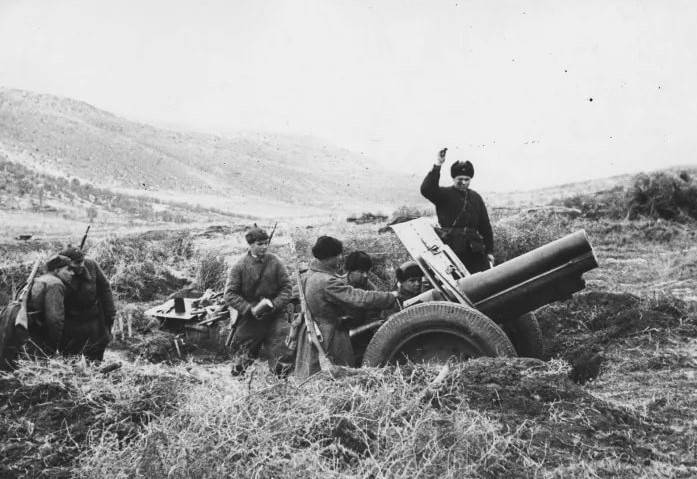
AT 1939 , the upgraded 122-mm howitzer used during events Khalkhin-. And the number of guns has increased steadily. This is due largely excellent results of the work of Soviet artillery. According to estimates of the Japanese officers, Soviet howitzer surpassed all, with which they have met before.
Naturally, the new Soviet system were the subject of «hunting» Japanese. Soviet howitzer barrage completely discourage the desire of Japanese soldiers to attack. The outcome of such «hunting» It becomes quite appreciable loss RKKA. It has been damaged or lost irretrievably 31 weapon. Furthermore, the Japanese were able to capture and quite a lot of trophies.
So, during a night attack position 149 Infantry regiment, on the night 7 on 8 July the Japanese captured the battery Aleshkina Lieutenant (6-I battery 175 artillery regiment). When you try to fight off the battery battery commander was killed, and personnel suffered considerable losses. In the future, the Japanese used the battery in its own army.
High point 122mm howitzer sample 1910/30 year was the Soviet-Finnish War. For various reasons, it is these tools was presented howitzer artillery of the Red Army. According to some reports, the number of howitzers only as part of the 7th Army (The first train) Then came almost 700 (other 624) units.
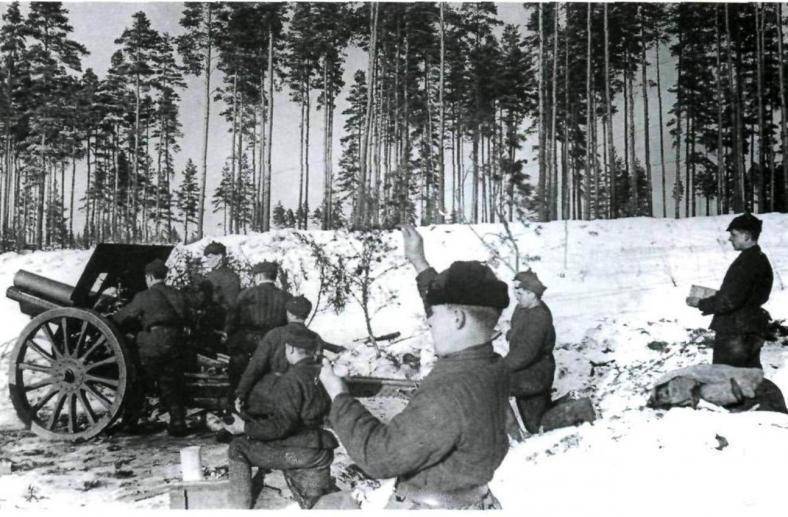
Similar, as it happened at Khalkhin-, gaubitsы Stahl «titbit» for the Finnish Army. The losses of the Red Army in Karelia according to various estimates made by 44 to 56 guns. Some of these howitzers also joined the Finnish Army and later used by the Finns effectively.
By the beginning of World War II we have described the guns were the most common in the Red Army howitzers. According to various estimates, the total number of such systems is reached 5900 (5578) guns. A staffing parts and compounds was from 90 to 100%!
At the beginning of the war, only in the western districts were 2752 122-mm sample howitzer 1910/30 years. But at the beginning of 1942 they have less than a year 2000 pcs (according to some estimates, 1900; no exact data).
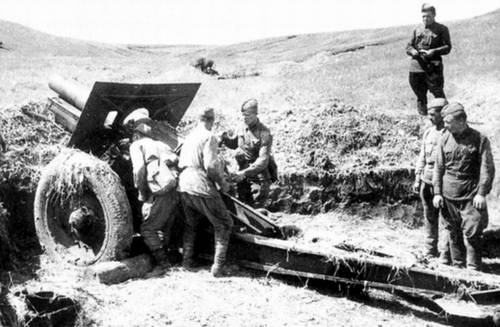
Such monstrous losses have played a negative role in the fate of these distinguished veterans. Naturally, new production created a more sophisticated tools. Such systems are M-30. They became the main howitzers already 1942 year.
But still at the beginning of 1943 the sample of howitzers 1910/30 years accounted for more than 20% (1400 PC.) the total number of such arms and continued their battle path. And reached the same to Berlin! outdated, posechennye fragments, repeatedly repaired, but come! Although see them on winning chronicle difficult. And then another lit up on the Soviet-Japanese front.
A lot of authors claims, that the 122mm howitzer sample 1910/30 years out of date by the 1941 year. And use of the Red Army «poverty». But there is a simple, but logical, question: and what criteria are used to determine age?
Yes, These howitzers could not compete with the same M-30, which will be our next story. But an instrument of sufficient quality to perform tasks. There is a term - the need for sufficient.
so here, These howitzers were exactly the necessary effectiveness. And in many ways the possibility of increasing the fleet of M-30, the Red Army contributed to the heroic work of those of old, but powerful howitzers.
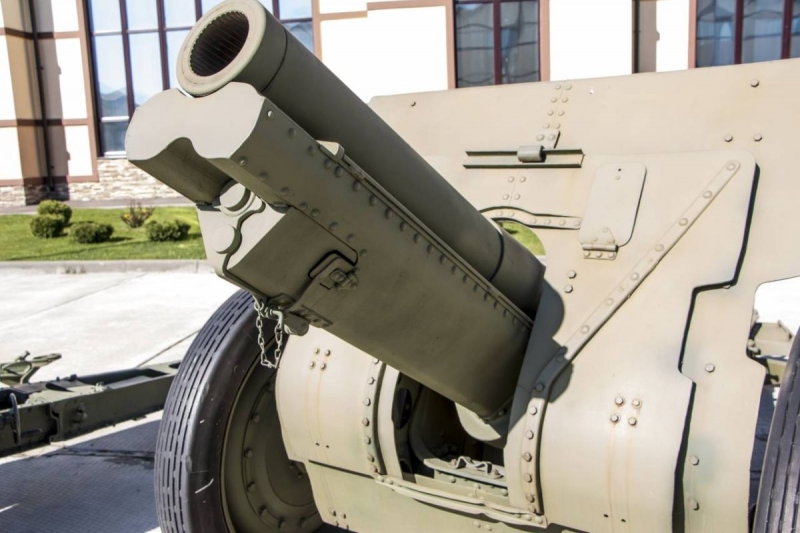
TTX 122mm howitzer sample 1910/30 years:
Caliber, mm: 122 (121,92)
Maximum range of fire grenade RP-462, m: 8 875
Weight of gun
— in the stowed position, kg: 2510 (to limber)
— in firing position, kg: 1466
Transfer time in firing position, sec: 30-40
The angles of fire, city.
- elevation (Max): 45
- reduction (min): -3
- horizontal: 4,74
Calculation, people: 8
rate of, rounds / min: 5-6








